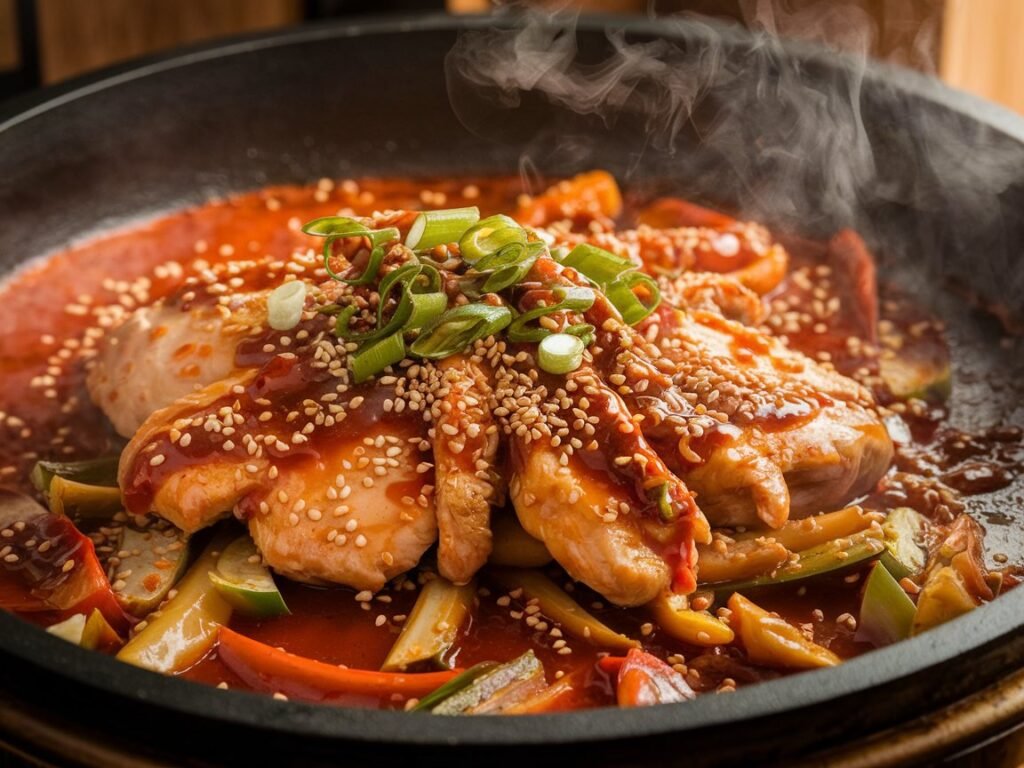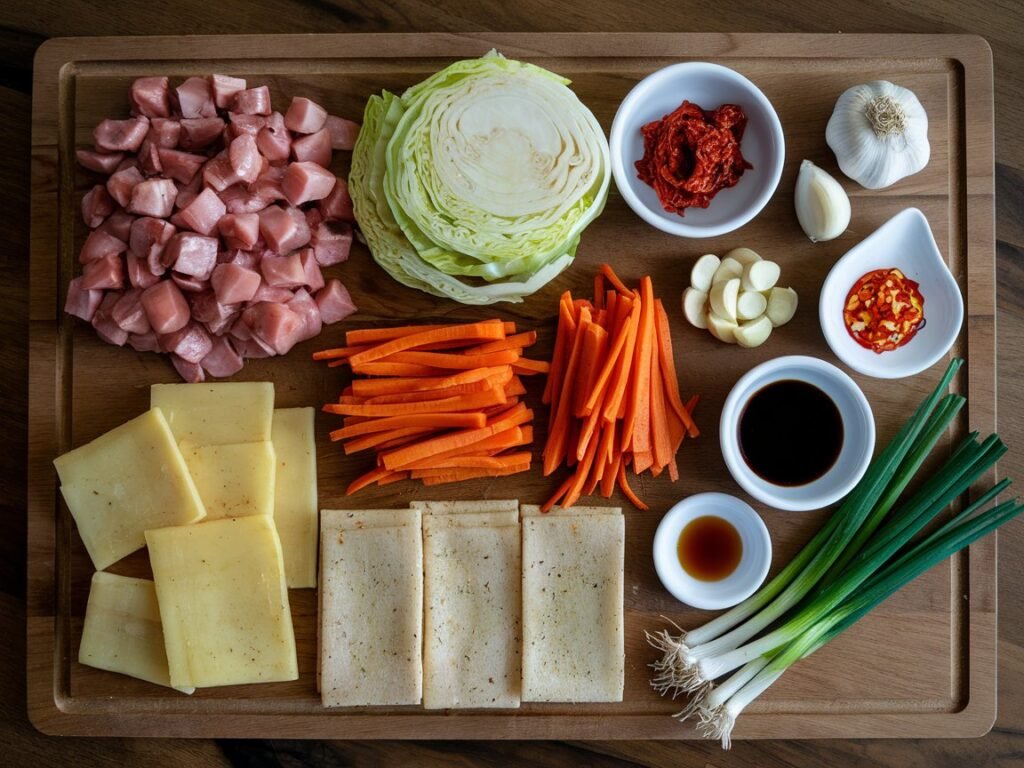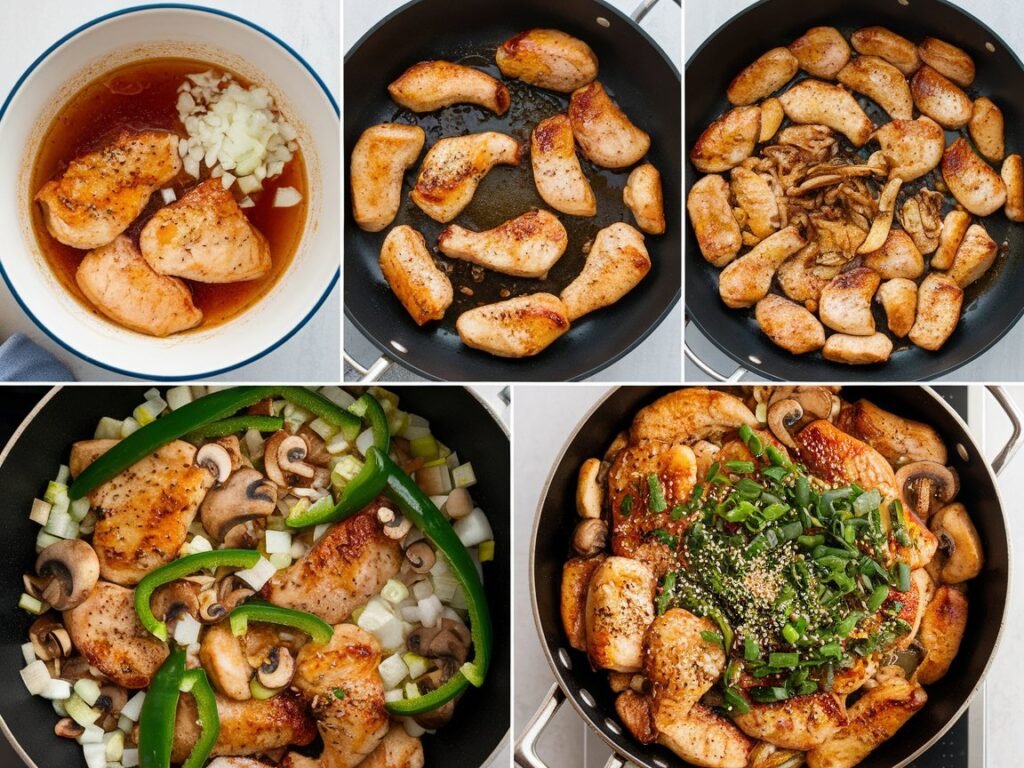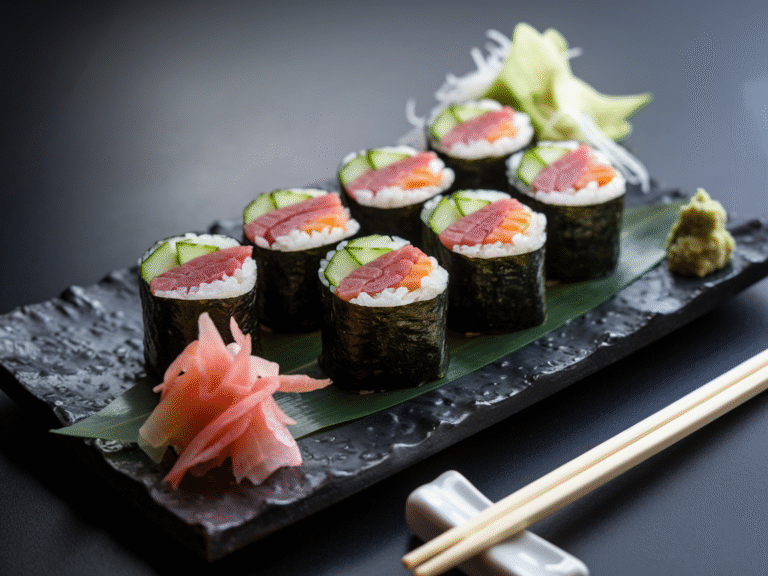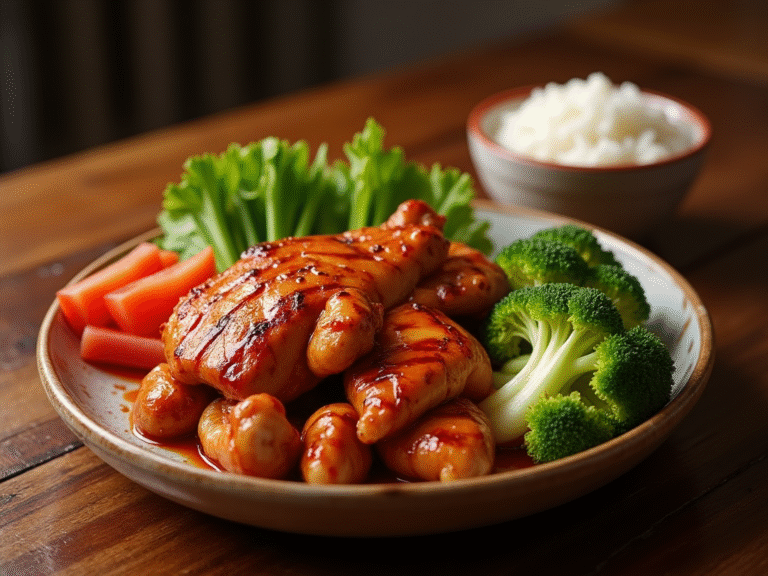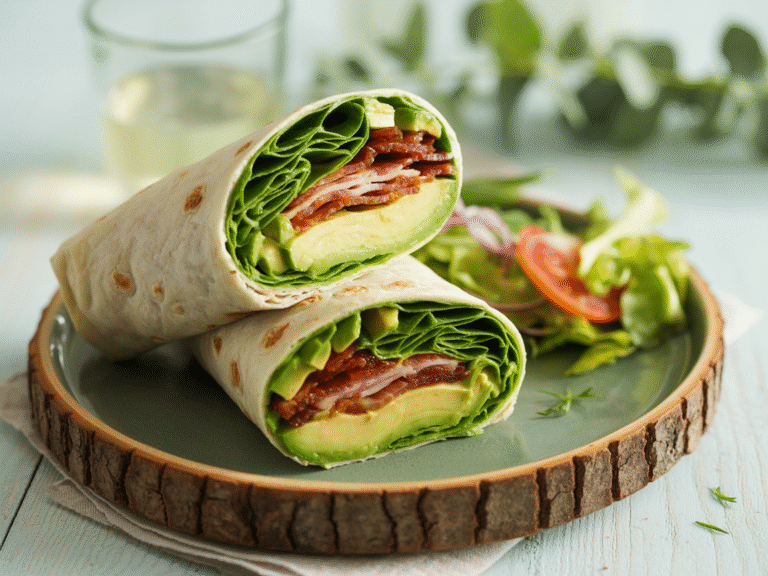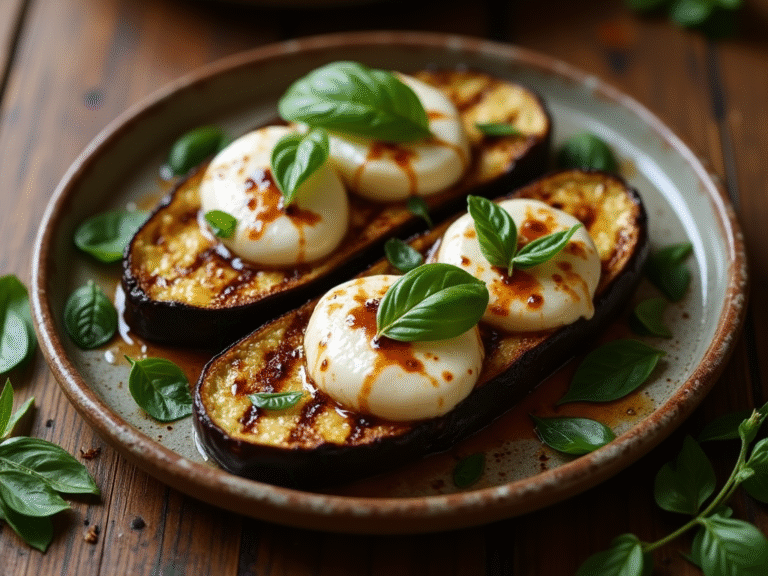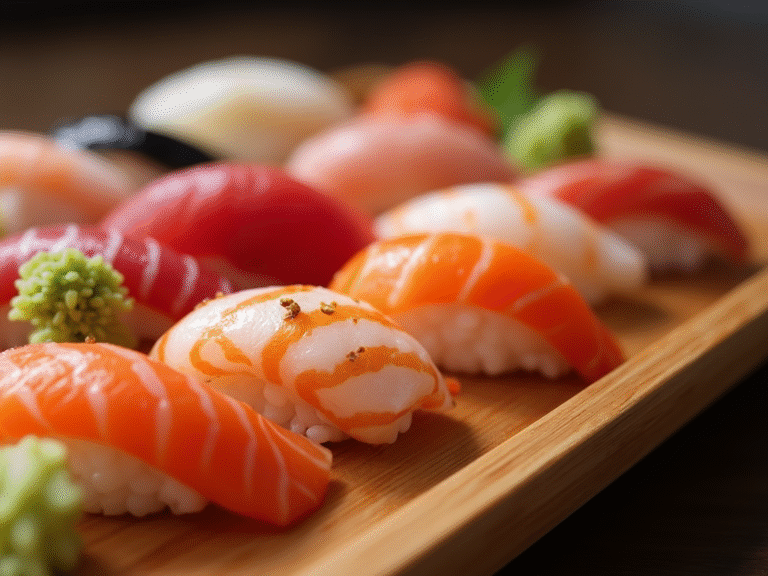Authentic Dak Galbi Recipe | Spicy Korean Stir-Fried Chicken
Dak Galbi Recipe: Spicy Korean Stir-Fried Chicken That Will Wow Your Taste Buds
1. Introduction
If you’ve ever dined at a Korean restaurant or watched K-dramas, you’ve likely encountered Dak Galbi – a flavorful, spicy stir-fried chicken dish that’s a staple in Korean cuisine. This dish combines marinated chicken, vegetables, rice cakes, and a bold, spicy sauce, creating a deliciously satisfying meal.
Why You’ll Love This Recipe
Dak Galbi is not only comforting and spicy, but it’s also incredibly easy to make at home. Whether you’re craving a hearty meal or want to try your hand at Korean cooking, this recipe is perfect for beginners and experienced cooks alike. It’s customizable, too – from varying the level of spice to swapping in your favorite veggies, this dish is as flexible as it is flavorful.
What you’ll learn in this post:
- How to make Dak Galbi from scratch using simple ingredients.
- Tips on marinating the chicken and creating the perfect balance of heat and flavor.
- Ideas for customization based on dietary preferences.
So, if you’re ready to bring the heat into your kitchen, let’s dive into making this savory, spicy, and irresistible Dak Galbi!
2. Ingredients Breakdown
Before jumping into the cooking process, let’s take a close look at the key ingredients in Dak Galbi and how they contribute to the dish’s unique flavor:
- Boneless Chicken Thighs (500g):
Chicken thighs are ideal for Dak Galbi because they’re juicy and flavorful. You can substitute chicken breast, but thighs will provide a better texture. Cut into bite-sized pieces for easy cooking. - Gochujang (3 tbsp):
Gochujang is a fermented red chili paste that brings the dish its signature spicy and umami flavor. If you like it milder, you can reduce the amount or use a milder chili paste. - Soy Sauce (2 tbsp):
Soy sauce adds saltiness and depth to the marinade. Tamari can be used as a gluten-free alternative. - Sesame Oil (1 tsp):
A key ingredient in Korean cooking, sesame oil imparts a rich, nutty flavor. It’s essential for the marinade and stir-frying. - Garlic (4 cloves, minced):
Garlic is a fundamental ingredient that enhances the overall flavor profile, giving the dish a savory, aromatic foundation. - Ginger (1 tsp, grated):
Fresh ginger adds a slightly spicy, warming note that pairs perfectly with the richness of the chicken and the heat from the gochujang. - Sugar (1 tbsp):
A small amount of sugar helps balance the spice from the gochujang and enhances the savory elements of the sauce. - Carrots (1 medium, sliced thin):
Carrots add sweetness, crunch, and vibrant color. Feel free to substitute with other root vegetables like parsnips or turnips for variety. - Cabbage (2 cups, chopped):
Cabbage is often used in Dak Galbi for its mild flavor and texture. It softens when cooked, soaking up the delicious sauce. Napa cabbage works best, but regular green cabbage will work too. - Sweet Potato (1 small, sliced thin):
The sweet potatoes add a bit of sweetness and a satisfying texture. They also absorb the flavor from the sauce, making each bite more delicious. - Rice Cakes (1 cup, tteok):
Tteok are chewy rice cakes, and they’re essential for authentic Dak Galbi. If you can’t find them, try substituting with cooked pasta or gnocchi for a similar texture. - Green Onions (2 stalks, chopped):
Green onions are added at the end for freshness and a slight crunch. - Sesame Seeds (1 tsp, optional):
Toasted sesame seeds make for a great garnish, adding extra crunch and nuttiness.
Substitutions and Dietary Preferences:
- Gluten-Free: Make sure to use tamari or a gluten-free soy sauce for this recipe.
- Vegetarian Version: Replace the chicken with tofu or tempeh. You can also use extra veggies and mushrooms for a meaty texture.
- Lower-Carb Option: Skip the rice cakes and use zucchini noodles or cauliflower rice instead.
3. Step-by-Step Instructions
Making Dak Galbi at home is simple with these easy-to-follow steps:
- Prepare the Chicken and Marinade:
In a large mixing bowl, combine the chicken thighs with 3 tbsp of gochujang, 2 tbsp of soy sauce, 1 tsp of sesame oil, minced garlic, grated ginger, and sugar. Mix everything thoroughly, ensuring that the chicken is well-coated. Let it marinate for at least 30 minutes to absorb the flavors. If you have more time, marinate for up to 2 hours in the fridge for even better results. - Prepare the Vegetables and Rice Cakes:
While the chicken marinates, thinly slice the carrots, chop the cabbage, and slice the sweet potato. Soak the rice cakes in warm water for about 10 minutes (if using frozen rice cakes) to soften them. Drain and set aside. - Cook the Chicken:
Heat a large skillet or wok over medium-high heat. Add a little oil and cook the marinated chicken in batches if necessary, for about 5-6 minutes, until browned on the outside. Don’t overcrowd the pan to ensure that the chicken cooks evenly. - Add the Vegetables and Rice Cakes:
Once the chicken is cooked through, add the sliced carrots, cabbage, and sweet potatoes. Stir-fry everything together for about 5-7 minutes, or until the vegetables begin to soften. Add the rice cakes and cook for an additional 5 minutes. Stir everything occasionally to prevent sticking. - Add the Sauce and Simmer:
Pour in any remaining marinade and a little water to create more sauce. Continue to stir everything together, making sure the sauce evenly coats the chicken and vegetables. Let everything simmer for another 5 minutes, allowing the sauce to thicken and the flavors to meld together. - Finish with Garnishes:
Once everything is cooked, sprinkle with sesame seeds and freshly chopped green onions for extra flavor and a pop of color. Serve immediately.
4. Tips and Variations
- For Extra Heat: If you like your Dak Galbi extra spicy, add more gochujang or some red pepper flakes.
- For a Creamy Twist: Stir in a couple of tablespoons of heavy cream or coconut milk at the end for a creamier sauce.
- Vegetable Add-ins: Add more vegetables like bell peppers, zucchini, or mushrooms for variety.
- Meat Options: You can swap chicken for beef, pork, or even shrimp for a different flavor profile.
5. Serving Suggestions
- Sides: Serve with steamed white rice or kimchi on the side for a complete meal.
- Breads: A warm baguette or soft Korean rice cakes (tteok) will pair wonderfully with the spicy chicken.
- Pairing Drinks: A cold beer, like a Korean lager, or a light, refreshing soju would complement this dish well.
6. Storage and Reheating Instructions
- In the Fridge: Store leftover Dak Galbi in an airtight container for up to 3 days.
- In the Freezer: You can freeze leftovers for up to 2 months. Let it cool completely before transferring to a freezer-safe container.
Reheating Instructions:
- Microwave: Reheat Dak Galbi in the microwave for 2-3 minutes, stirring halfway through.
- Stovetop: Reheat in a skillet over medium heat for about 5-7 minutes, adding a little water if necessary to loosen the sauce.
7. Recipe Notes
- Can Be Prepped Ahead of Time: Marinate the chicken the night before for even better flavor.
- Best with Fresh Ingredients: Fresh chicken and vegetables will make the dish taste much better.
- Use a 6-Quart Crock Pot (Optional): You can also make Dak Galbi in a slow cooker. Cook on low for 4-5 hours or on high for 2-3 hours for a hands-off version.
8. Nutrition Information (Per Serving)
| Nutrient | Amount per Serving |
|---|---|
| Calories | 320 |
| Fat | 16g |
| Saturated Fat | 3g |
| Carbs | 30g |
| Sugar | 7g |
| Fiber | 5g |
| Protein | 24g |
| Sodium | 650mg |
| Cholesterol | 70mg |
| Calcium | 40mg |
| Iron | 2mg |
Nutrition information is an estimate and may vary based on specific ingredients used.
9. Recipe Card Summary
- Course: Main
- Cuisine: Korean
- Servings: 4
- Prep Time: 15 minutes
- Cook Time: 25 minutes
- Total Time: 40 minutes
Ingredients:
- 500g boneless chicken thighs
- 3 tbsp gochujang
- 2 tbsp soy sauce
- 1 tsp sesame oil
- 4 cloves garlic, minced
- 1 tsp ginger, grated
- 1 tbsp sugar
- 1 medium carrot, sliced
- 2 cups cabbage, chopped
- 1 small sweet potato, thinly sliced
- 1 cup rice cakes
- 2 stalks green onions, chopped
- 1 tsp sesame seeds (optional)
Instructions:
- Prepare chicken and marinade.
- Cook chicken in a skillet.
- Add vegetables and rice cakes.
- Pour in marinade and simmer.
- Garnish and serve.
Notes: Marinate chicken ahead of time for better flavor.
10. Health Benefits
- Chicken: A great source of lean protein, which helps build muscle and supports metabolism.
- Gochujang: Contains capsaicin, which has been shown to boost metabolism and promote fat burning.
- Cabbage: Rich in fiber and vitamins like K and C, helping to support digestion and the immune system.
11. Suggested Sauce
A drizzle of sesame oil or Korean BBQ sauce will enhance the flavor of Dak Galbi. You can also serve it with a side of spicy kimchi for added zest.
12. Avoid These Mistakes
- Don’t overcrowd the pan when cooking the chicken — this can result in uneven cooking.
- Be cautious with the gochujang; add gradually if you prefer a milder flavor.
- Don’t skip soaking the rice cakes if they’re frozen; they won’t cook properly otherwise.
13. FAQs
- Can I make this dish vegetarian?
Yes, replace the chicken with tofu or tempeh for a plant-based version. - Can I use a different type of meat?
Absolutely! Beef, pork, or shrimp are excellent alternatives. - Can I make this dish spicier?
Yes, simply add more gochujang or red chili flakes for extra heat. - What is the best way to store leftovers?
Store leftovers in an airtight container in the fridge for up to 3 days. - How can I make this dish gluten-free?
Use tamari instead of soy sauce and make sure to check that your gochujang is gluten-free. - Can I use a slow cooker for Dak Galbi?
Yes, you can cook Dak Galbi in a slow cooker on low for 4-5 hours or high for 2-3 hours.
14. Final Thoughts
Dak Galbi is a fantastic dish to try at home — it’s flavorful, customizable, and perfect for any occasion. Whether you’re looking to impress guests, feed your family, or enjoy a comforting weeknight meal, this recipe has you covered. Let me know how it turns out for you in the comments below!

